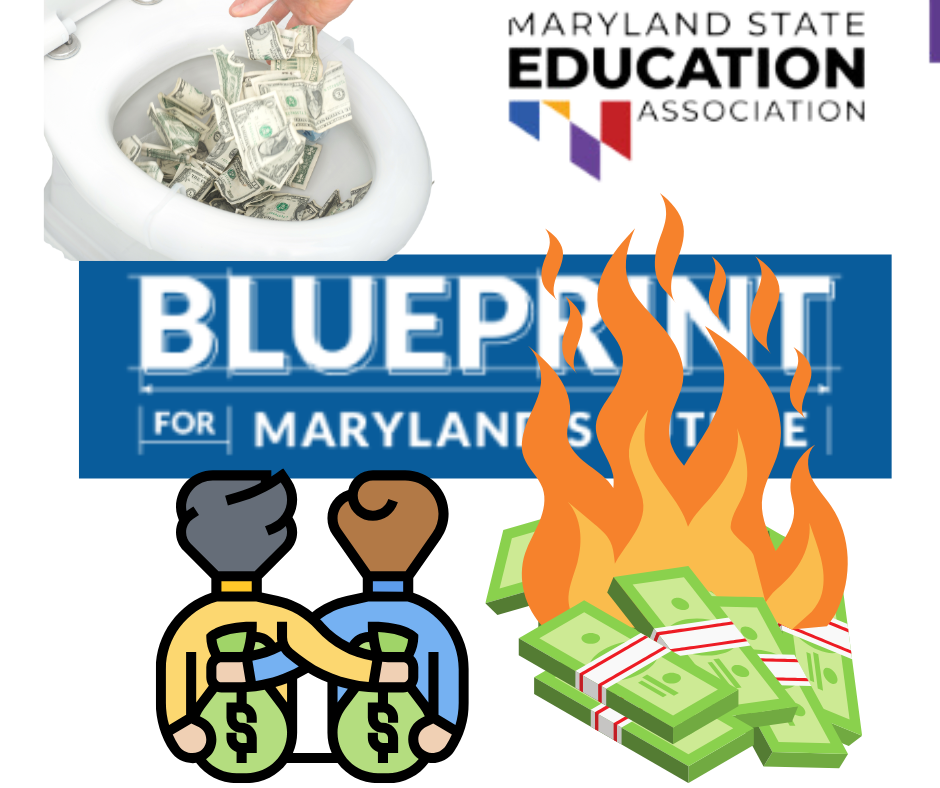
Please follow us on Gab, Minds, Telegram, Rumble, Truth Social, Gettr, Twitter
As the State of Maryland grapples with a looming state deficit of $1 billion in 2026 rising to $3 billion in 2028, officials from local jurisdictions submitted their plans to implement priorities of the Blueprint to the Accountability and Implementation Board. The plan has been cited as one of the reasons for the anticipated State deficit since it requires a 10 year, 3.8-billion-dollar infusion of money to schools.
Justin Ready (R), Maryland Senate Minority Whip from Carroll and Frederick Counties, expressed his concerns over the rapid implementation of the Blueprint citing the need for financial sustainability and accountability.
“I don’t quite understand what’s the rush. It’s like they’re trying to pump money through the [education] system so fast,” Ready said. “If we would just slow down the implementation some, it would be more sustainable financially for all of our counties and for the state.”
Ready also asked for more accountability in the plan, "We’re still going to make a major investment every year, but let’s get it to where we can be sustainable with that…to make sure we get the right results for all this money.”
Needless to say, the Maryland State Education Association doesn't agree, as their "go to" reason for the continued decline in student academic performance across the state is lack of funding. They often claim that teachers are leaving the profession because of pay, while many know that working conditions are one of the top reasons teachers quit.
From the Department of Education, the top reasons teachers leave teaching:
MESA President Cheryl Bost spoke to local Boards and Superintendents, “So, it’s really evaluating what you’ll spend your money on, prioritizing and aligning with the Blueprint and making the investment. They can do it, but some of them don’t have the political will to do it.”
In May, locals have to submit system data for their progress on the five pillars of the Blueprint; early childhood education, hiring and retaining high-quality and diverse teachers, preparing students for college and technical careers, providing additional resources for students in need and governance and accountability. The AIB Board will evaluate each districts direction and success.
This month they outlined the challenges they face in implementing the Blueprint and how they might meet them.
Locally, we looked at Caroline, Dorchester, Queen Anne's and Talbot Counties responses:
CAROLINE:
— Funding
— Guidance
— Staffing
“In this context, it becomes imperative to identify these challenges, develop targeted strategies, and foster a culture of adaptability and collaboration to overcome hurdles and advance the Blueprint’s objectives. These three challenges were selected as the greatest challenges because they directly impact our progress towards reaching the goals of the Blueprint. Philosophically, we are excited about the promise of the Blueprint and are well-aligned with the priorities, but our biggest challenges are significant risks for us being able to achieve our goals.”
DORCHESTER:
— Professional development
— Certification
— Funding
“Professional development, the lifeblood of the any organization, has the potential to move the needle for student success. In the past, there has not been consistent professional learning across the board. Factors such as staffing, funding, the availability of resources and other structures have hampered efforts to provide professional learning for faculty and staff. As is the case, student achievement has been impacted on all levels especially in ELA (English Language Arts) and math. Because the district is keenly aware of professional development and its impact, school leaders have become more intentional in providing professional development particularly for the upcoming school year.”
QUEEN ANNE'S:
— Funding
— Prekindergarten expansion
— High-quality and diverse teachers and leaders
“Our reality is that QACPS could have less money in our overall, unrestricted operating budget in [Fiscal Year] 2025. Our leadership is collaborating and strategically planning our financial well-being with our county administration to request above MOE (maintenance of effort) funding. Addressing the funding challenge often requires assessing the feasibility of the new initiative, as well as a clear understanding of organizational priorities and constraints. Additionally, seeking alternative funding sources, such as grants, partnerships, or cost-sharing arrangements, may help overcome funding limitations.”
TALBOT:
— Mixed delivery and expansion of prekindergarten
— Recruiting highly qualified staff and building leadership capacity
— Resource reallocation and funding Blueprint mandates
“As we explore partnerships with private providers, we continuously face challenges with securing facility space for 3-year-old classrooms and assisting private providers with staffing and accreditation requirements. In our rural district, there are very few private childcare providers, with most having extensive waiting lists for entry. Private providers have also indicated that the funding for a mixed-delivery system does not coincide with their current business model and space availability. While TCPS is currently reviewing district infrastructure to support Pre-K expansion in our own facilities, we are also challenged with space and staffing.”
Parts of this article were sourced at: Blueprint implementation continues: New plans reveal ongoing challenges for schools - Maryland Matters
